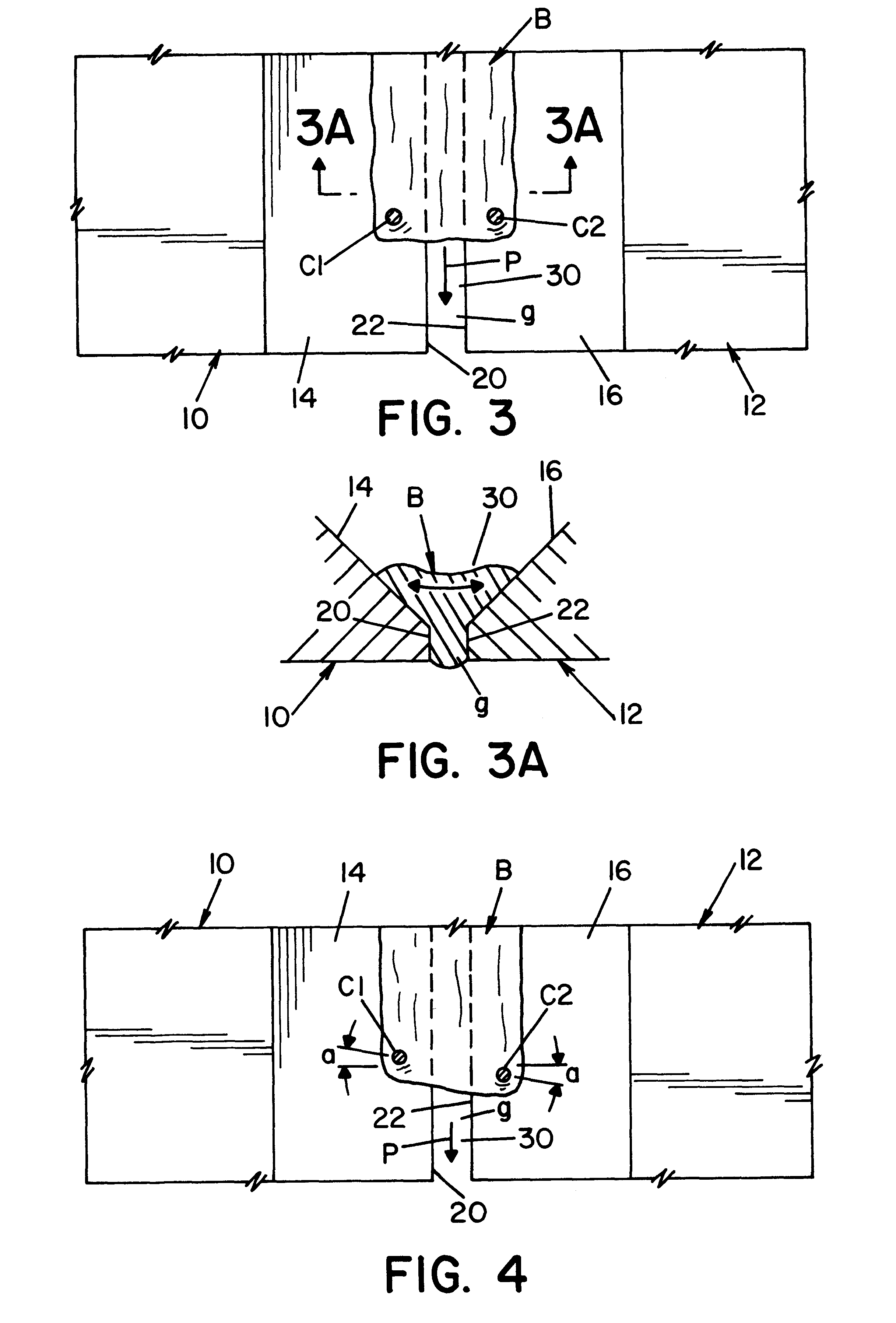Electric welding apparatus and method
a welding apparatus and electric welding technology, applied in welding apparatus, other domestic objects, manufacturing tools, etc., can solve the problems of speed limitation, electrodes are not oriented in tandem relationships, arrangement cannot use stt technology or other short-circuit welding, etc., to increase the speed of deposition, increase the speed of molten metal, and increase the effect of spatter
- Summary
- Abstract
- Description
- Claims
- Application Information
AI Technical Summary
Benefits of technology
Problems solved by technology
Method used
Image
Examples
Embodiment Construction
Referring now to FIGS. 1-3, steel plates 10, 12 which, in practice, are the cylindrical ends of two adjacent pipe sections that have been brought together and, then, retracted to produce a small spacing or gap g. Plates 10, 12 are formed from diverging sidewalls 12, 16 and facing edges or ends 20, 22, respectively, to define an open root joint 30. This joint is fairly narrow at gap g and opens outwardly toward the top of plates 10, 12. Open root joint 30 extends in a path P, best shown in FIG. 3, which path in a pipe welding installation is cylindrical about the central axis of the pipe sections. During use of the present invention, a molten metal puddle B is formed by melting consumable electrodes, or welding wires, C1, C2. These wires are melted and by surface tension action form into the molten metal puddle at a controlled temperature allowing the molten metal to extend through gap g between edges or ends 20, 22. Puddle B solidifies to join the pipe sections together in accordanc...
PUM
| Property | Measurement | Unit |
|---|---|---|
| diameter | aaaaa | aaaaa |
| frequency | aaaaa | aaaaa |
| current | aaaaa | aaaaa |
Abstract
Description
Claims
Application Information
 Login to View More
Login to View More - R&D
- Intellectual Property
- Life Sciences
- Materials
- Tech Scout
- Unparalleled Data Quality
- Higher Quality Content
- 60% Fewer Hallucinations
Browse by: Latest US Patents, China's latest patents, Technical Efficacy Thesaurus, Application Domain, Technology Topic, Popular Technical Reports.
© 2025 PatSnap. All rights reserved.Legal|Privacy policy|Modern Slavery Act Transparency Statement|Sitemap|About US| Contact US: help@patsnap.com



